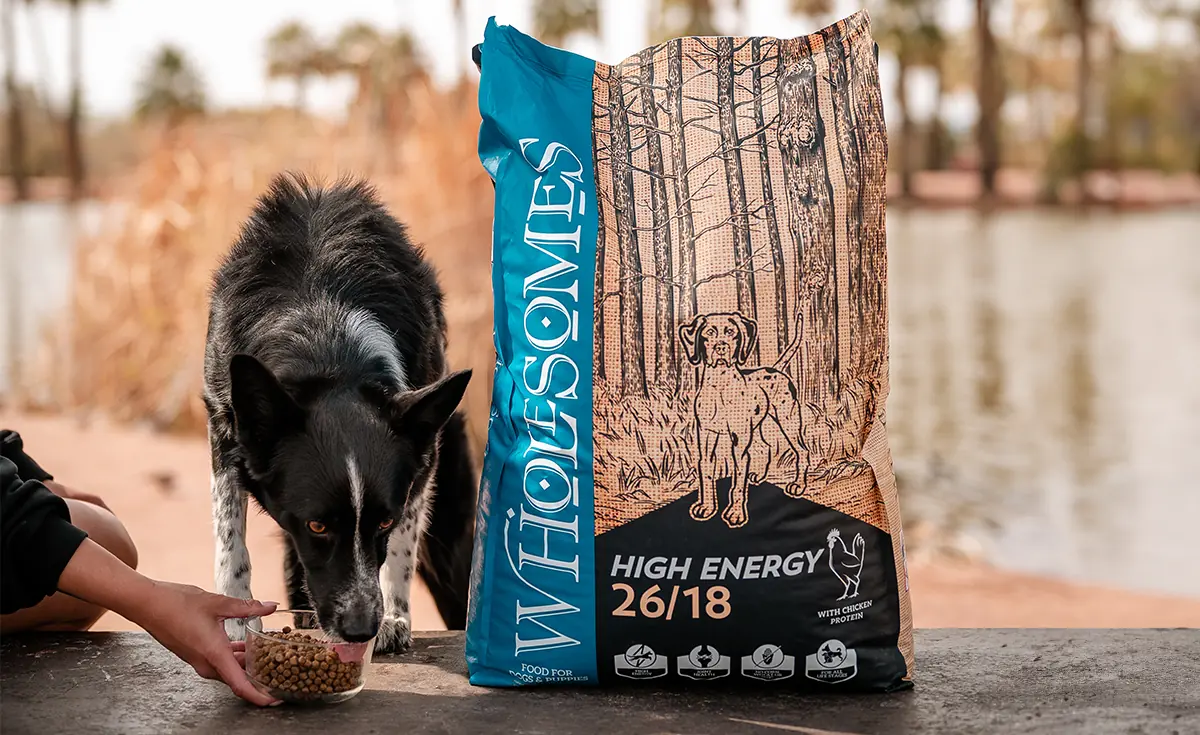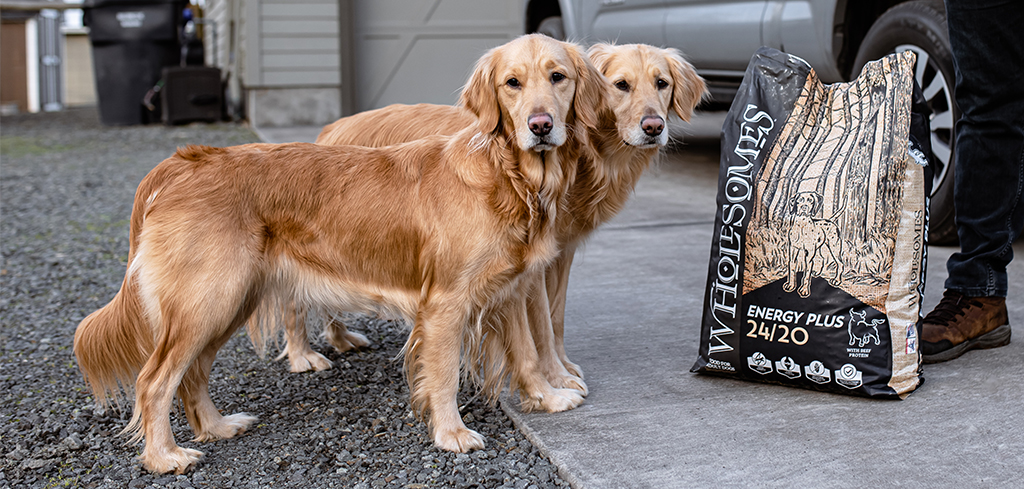High Energy vs. Low Energy Dog Breeds: Finding Your Perfect Match
Finding a canine companion that aligns with your lifestyle is vital for a happy and harmonious relationship. Whether you lead a laid-back life or are always on the go, understanding the distinction between high energy and low energy dog breeds can help you find the perfect match.
In this article, we’ll dive into the traits of both high energy and low energy dogs and highlight some of the most popular breeds. Plus, we’ll take a look at the dietary needs associated with a dog’s energy levels, and share some tips for choosing the right pup for your home.

Characteristics of High Energy Dog Breeds
High energy dog breeds are full of energy and enthusiasm, needing lots of exercise and mental stimulation to stay happy and healthy. These dogs are ideal for individuals or families who lead an active lifestyle and can provide plenty of opportunities for their pets to burn off pent-up energy.
Identifying High Energy Breeds
High energy dogs love to move, need lots of exercise, and enjoy playing often. These breeds often excel in dog sports and activities that challenge their physical and mental capabilities.
For example, agility training, flyball, and advanced obedience work are excellent outlets for their boundless energy, providing the stimulation they crave and helping to prevent boredom and related behavioral issues.
Examples of High Energy Breeds
When considering high energy dog breeds, several stand out for their inexhaustible energy and need for engagement:
- Border Collie. Known for their remarkable intelligence and agility, Border Collies are workaholics that excel in competitive sports and tasks that challenge their minds and bodies. They’re often seen leading the pack in agility competitions, herding trials, and other canine sports, showcasing their versatility and drive.
- Australian Shepherd. Australian Shepherds are not only full of energy but also highly intelligent and eager to please. This makes them fantastic partners in a variety of activities, from hiking to competitive obedience. Their adaptability and zest for life mean they’re always ready for the next adventure, whether it’s a trail run or a training session.
- Jack Russell Terrier. Despite their compact size, Jack Russells are powerhouses of energy, known for their fearless nature and love of vigorous play. They thrive in environments where they can engage in high-intensity games and enjoy tasks that test their quick wit and agility.
- Siberian Husky. Bred for endurance sled pulling, Siberian Huskies have an innate desire for regular, energetic exercise. Their stamina and love of running make them perfect companions for long-distance runners or those with access to expansive outdoor spaces for them to roam.
- Dalmatian. Originally bred to run alongside carriages, Dalmatians still possess a high stamina and love for extended physical activity. They’re happiest when given the opportunity to stretch their legs in wide-open spaces and participate in endurance activities.
Meeting the Needs of High Energy Dogs
To keep high energy dogs balanced and content, it’s essential to include both physical exercise and mental challenges in their daily routine.
Activities like hiking, running, and interactive play sessions, combined with puzzle toys and training exercises, help to fulfill their intrinsic needs. Engaging them in canine sports can also provide an excellent outlet for their energy, offering both physical exertion and mental stimulation.
Understanding Low Energy Dog Breeds
Low energy dog breeds are the perfect match for those seeking a more relaxed companion. These low maintenance dogs prefer leisurely walks to high energy runs and are content with shorter periods of play. They fit well into a variety of lifestyles, especially where space is limited or the household’s overall energy is more subdued.
Identifying Low Energy Breeds
Characteristics of low energy dog breeds include a more relaxed approach to life, with less of a need for constant activity. These dogs are often content with being close to their family members, enjoying cuddles, regular grooming, and companionship over exhaustive play.
They tend to adapt well to a variety of living situations, from apartments to homes with small yards, making them ideal for city dwellers or those with a more sedentary lifestyle.
Examples of Low Energy Breeds
Several breeds exemplify the low energy lifestyle, making them great choices for those who prefer a more laid-back companion:
- Basset Hound. Basset Hounds are a perfect example of a low energy breed, known for their laid-back nature and preference for lounging over lunging. Their short legs and long bodies aren’t built for speed, making leisurely walks and sniffing around the yard more their style.
- Shih Tzu. The Shih Tzu is designed for companionship, content with short daily walks and playtime at home. They excel as lap dogs, offering affection and comfort, and are well-suited to life in smaller living spaces where extensive physical activity isn’t a necessity.
- French Bulldog. The French Bulldog is a low energy breed that doesn’t need a huge amount of exercise. They’re happiest when they can spend time with their family, whether it’s a short stroll or simply relaxing by your side.
- Pekingese. Pekingese dogs carry themselves with a dignified air, preferring the comforts of home over the challenge of intense physical activity. Their small size and calm temperament make them excellent companions for those looking for a pet that’s more inclined towards relaxation than exertion.
- Cavalier King Charles Spaniel. These gentle dogs strike a balance between being playful and peaceful. They enjoy leisurely walks in the park and cozy downtime at home, making them versatile companions for both active and relaxed lifestyles.
Meeting the Needs of Low Energy Dogs
Low energy dogs still need regular, gentle exercise and mental stimulation to stay healthy and content. Leisurely walks and light play suit their energy levels, while companionship and affection keep them happy. Balancing their calm nature with engaging activities ensures a fulfilling life for these laid-back companions.
Dietary Considerations for Different Energy Levels
The dietary needs of a dog can vary greatly depending on their energy level. High energy breeds require a diet rich in proteins and fats to fuel their active lifestyle. By comparison, low energy breeds need carefully managed diets to prevent weight gain due to their more sedentary nature.
Nutritional Needs of High Energy Dogs
High energy dogs, with their active lifestyles, demand a diet that’s rich in high-quality proteins and fats to provide them with the necessary energy. Foods formulated for active breeds often contain higher calorie content to support their increased metabolic rate. Ingredients like lean meats, complex carbohydrates, and healthy fats are essential to maintaining their strength and stamina.

Our High Energy and Energy Plus diets are ideal for active adult dogs, featuring high-quality chicken and beef proteins. High Energy supports growth and activity with added DHA for brain and eye health, while Energy Plus boosts performance and endurance. Both include Glucosamine and Chondroitin for joint health, Taurine for heart health, and omega fatty acids for healthy skin and coat. Plus, they contain healthy vegetable fibers and whole grains for optimal digestion.
Nutritional Needs of Low-Energy Dogs
Conversely, low-energy dog breeds require a diet that’s carefully calibrated to their less active lifestyle. Overfeeding can lead to obesity and associated health issues, so their diets should be lower in calories and fats, with a focus on maintaining a healthy weight.
Portion control and regular weight checks are crucial for these breeds to ensure they remain healthy and happy. Monitoring their food intake and adjusting portions as needed will help keep them in tip-top shape for years to come.
Choosing the Right Dog Food
When selecting the right dog food, it’s important to consider not only the energy level of your dog but also their size, age, and any specific health needs.
Consulting with a veterinarian can provide personalized advice tailored to your dog’s unique requirements, ensuring they receive the nutrition they need to thrive.
Finding Your Perfect Match
Selecting the ideal dog breed means matching their energy with your lifestyle. In this section, we’ll explore how to assess your routine, the role of training, and tips for living happily with dogs of any energy level.
Assessing Your Lifestyle
The key to finding your perfect canine companion lies in an honest assessment of your lifestyle. Factors such as your living space, daily routine, and family dynamics play a significant role in determining whether a high-energy or low-energy dog breed would be the best fit for you.
The Importance of Training and Socialization
Training and socialization are vital components of a well-rounded dog, regardless of their energy level. These practices not only help in managing their energy but also in ensuring they can adapt well to various environments and situations.
Solutions for Mismatched Energy Levels
If you find yourself with a dog whose energy level doesn’t quite match your own, there are several strategies to bridge the gap.
Adjusting your routine to include more (or fewer) activities, employing the services of dog walkers or daycare, and finding interactive toys to keep them engaged can all contribute to a balanced and happy life together.
Key Takeaways
- Selecting a dog breed that aligns with your lifestyle ensures a harmonious relationship.
- High-energy dogs thrive with ample exercise and mental stimulation.
- Low-energy dogs are ideal for relaxed settings and need minimal physical activity.
- The dietary needs of dogs differ based on their energy levels, with high-energy dogs requiring protein-rich diets.
- Nutrients supporting joint health, heart health, and a healthy coat are vital for all dogs.
- Effective training and socialization are crucial for a dog’s adaptation and well-being.
Is a High-Energy or Low-Energy Dog Right for You?
The choice between a high-energy and a low-energy dog breed significantly impacts your lifestyle and your potential pet’s well-being. Careful consideration of your daily life, along with an understanding of the needs and characteristics of different breeds, will guide you to a fulfilling partnership with your new furry friend.
Remember, the right match can lead to years of joy and companionship, making the thoughtful selection process well worth the effort!
